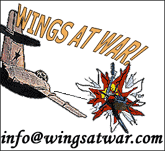A Mighty Fortress Painting Guide
USAAF
At the beginning of 1944 the USAAF decided that the majority of combat aircraft in the European Theater of Operations should be left unpainted or in their silver primer, though local commanders had the final say which could lead to a mixture of camouflaged and bare aircraft in the same unit.
For D-Day three black and five white broad recognition stripes were added to the fuselage and wings. These were supposed to be removed in September of 1944 but were often left, especially on the medium bombers and fighter-bombers. Anti-glare panels in front of the cockpit were olive drab or black, though some units used squadron colours.
RAF
The RAF was more geared to the close support role so all their aircraft were camouflaged. The standard scheme followed the earlier design of two-tone disruptive pattern in dark green and ocean grey (the later replacing the original dark earth) over medium grey undersides. Invasion stripes were universal.
LUFTWAFFE
Bombers used the standard splinter camouflage (a blocky pattern) of either mid green and dark green (called black-green) or grey and dark grey. Most fighters had the grey splinter pattern along the top surfaces with light grey undersides and light grey fuselage sides with dark grey mottled blotches.
Me 262s seem to have operated in all manner of different looks; from the standard fighter scheme in either greens or greys, to single colour or wavy style camouflage. Generally, whatever was thought best to conceal them when on the ground. The bomber version was usually light blue with green wavy patterns on the top surfaces.
The Ar 234 jet had the standard bomber two green splinter pattern but the paint used was gloss in order to reduce drag.
Defence of the Reich rear fuselage bands were introduced for fighters in 1944. Initially this consisted of a single red band but in early 1945 orders were issued for each Jagdgeschwader to have its own combination of one to three bands in various colours. It seems likely that most units ended up using JG 300's triple blue/white/blue bands. For easy recognition by ground troops when operating over Germany fighters often had the bottom panel of their engine cowling painted yellow.
National Insignia on the right:
USAAF
RAF fuselage sides and wings
for medium bombers and fighter bombers
RAF wings for others
Luftwaffe wing/fuselage,
simplified wing, and two simplified fuselage crosses

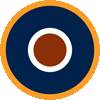
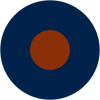
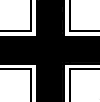
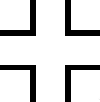
Click on the links below for more information
